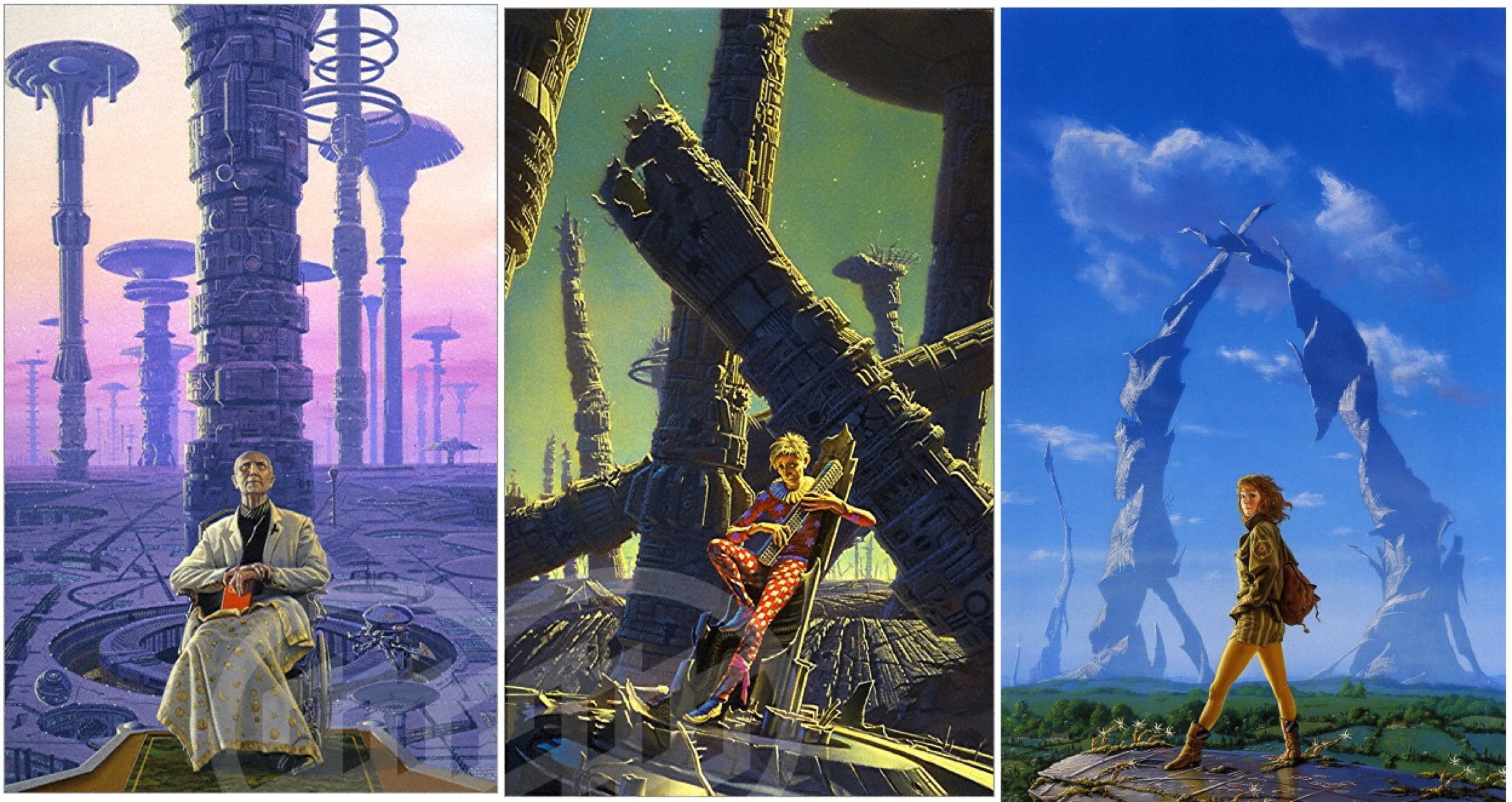At the beginning of the year, I decided to give myself a little book challenge by working through 10 Books You Pretend to Have Read (And Why You Should Really Read Them) article posted in io9. Seeing Asimov’s Foundation listed right in there (and knowing I had one or two of them) seemed like a great place to start. Having devoured the first book rather quickly, I went ahead and read the original trilogy.

Some time in the far distant future, the universe has become one great galactic empire. At the center of it lies the planet Trantor, a planet blanketed entirely with cities, streets, infrastructure, running the galaxy. Here a man named Hari Seldon perfected the mathematics/science of psychohistory. It can effectively predict the future of civilizations as a whole. It comes with some catastrophic news. The galaxy is about to collapse horrifically and plunge itself into barbarism and won’t recover from this for nearly 30 thousand years. This can’t be avoided. However, if permitted, Seldon can enact a plan that will allow the galaxy to recover in a mere 1 thousand years instead. Seldon is granted his plan. He is given a no-name planet at the far end of the galaxy to establish a “Foundation”. There a galactic encyclopedia will be created and maintained, and distributed throughout the galaxy with all of the technology, history, and other information needed to help mankind continue through, and beyond it’s dark time.
From there we begin to see the future unfold, and see if Seldon’s plan actually works. I’ll refrain from much detail because a lot of the enjoyment of this series is trying to figure out what is happening. Along the way there are several crises that are encountered that look to ruin the Foundation. How does Seldon’s plan account for these? Seldon makes a few appearances in the future, strikingly at times he is needed most. Eventually an event arises that was not accounted for in Seldon’s plan. The entire future of mankind seems poised to be lost if something isn’t done. There’s also mention of a second Foundation that was created by Seldon on the opposite end of the galaxy, but nobody has been able to find it. Does it really exist? If so, what purpose does it serve? All of these events (and more) progress over the course of 400 years.
While there isn’t a lot of action, so to speak, in these books, I was fascinated by the progress and change in Foundation’s culture and civilization as it slowly grew. The Foundation as a whole takes several forms over time, including a short period as a “religious empire” where it’s nuclear technology, now only available to them, becomes a “mystical” source of power and the Foundation is able to have “priests” on other planets, providing it’s “power” in exchange for its safety. The quotes from the “Encyclopedia Galactica” that prefaces various chapters leads to a glimpse of a larger scale of events that leads nicely into each “phase” in the history of Foundation. The various events through history are paced well enough that it was only during the beginning/middle of the second book (Foundation and Empire) that I really felt any kind of drag while reading, but after that the book picks up pace (and intrigue) and continues all the way through the third book (Second Foundation).
Overall this series is a great read and I give it a solid 4 out of 5. I think you’ll spend some time afterwards thinking about some of the technology that is in place, but not really discussed (personal shields, thought readers, this whole idea of predicting the future based on psychology of the masses). While the trilogy is self-contained on its own, I look forward to reading the other books that expand the story further.